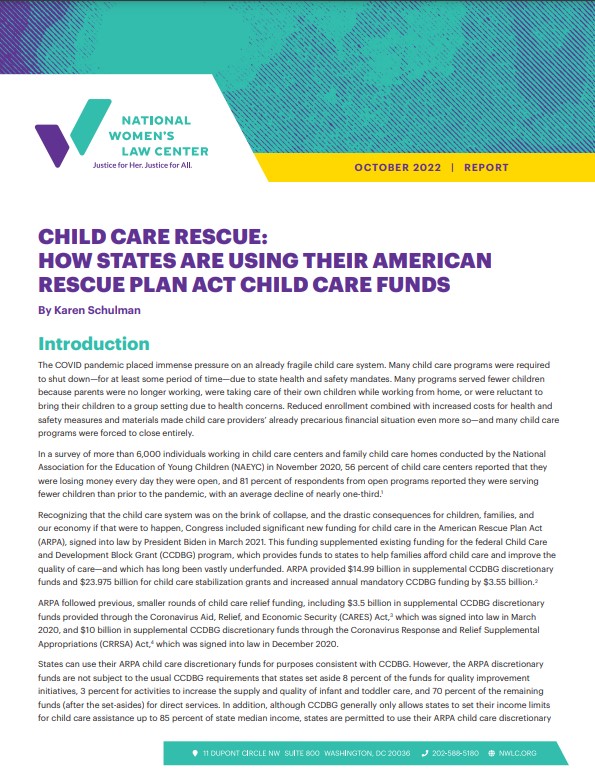Abortion rights, women of color, and LGBTQI+ people are under attack. Pledge to join us in fighting for gender justice.
Child Care Rescue: How States Are Using Their American Rescue Plan Act Child Care Funds

The COVID pandemic placed immense pressure on an already fragile child care system. Many child care programs were required to shut down—for at least some period of time—due to state health and safety mandates. Many programs served fewer children because parents were no longer working, were taking care of their own children while working from home, or were reluctant to bring their children to a group setting due to health concerns. Reduced enrollment combined with increased costs for health and safety measures and materials made child care providers’ already precarious financial situation even more so—and many child care programs were forced to close entirely.
Recognizing that the child care system was on the brink of collapse, and the drastic consequences for children, families, and our economy if that were to happen, Congress included significant new funding for child care in the American Rescue Plan Act (ARPA), signed into law by President Biden in March 2021. This funding supplemented existing funding for the federal Child Care and Development Block Grant (CCDBG) program, which provides funds to states to help families afford child care and improve the quality of care—and which has long been vastly underfunded. ARPA provided $14.99 billion in supplemental CCDBG discretionary funds and $23.975 billion for child care stabilization grants and increased annual mandatory CCDBG funding by $3.55 billion.
This report provides state-by-state descriptions of how states are using or plan to use ARPA child care discretionary funds to support a range of purposes aimed at increasing families’ access to help paying for child care, supporting the child care workforce, improving the quality of child care, and building the supply of child care.
While this report is primarily focused on how states are using their ARPA child care discretionary funds, the report also provides state-by-state data on the number and types of providers receiving ARPA child care stabilization grants and the average or range of grant amounts.

